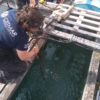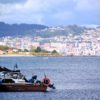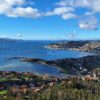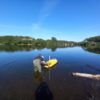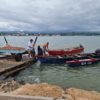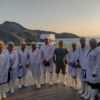Resumen
Extreme Wave Height Events in NW Spain: A Combined Multi-Sensor and Model Approach
The Galician coast (NW Spain) is a region that is strongly influenced by the presence of low pressure systems in the mid-Atlantic Ocean and the periodic passage of storms that give rise to severe sea states. Since its wave climate is one of the most energetic in Europe, the objectives of this paper were twofold.
The first objective was to characterize the most extreme wave height events in Galicia over the wintertime of a two-year period (2015–2016) by using reliable high-frequency radar wave parameters in concert with predictions from a regional wave (WAV) forecasting system running operationally in the Iberia-Biscay-Ireland (IBI) area, denominated IBI-WAV.
The second objective was to showcase the application of satellite wave altimetry (in particular, remote-sensed three-hourly wave height estimations) for the daily skill assessment of the IBI-WAV model product.
Special attention was focused on monitoring Ophelia—one of the major hurricanes on record in the easternmost Atlantic—during its 3-day track over Ireland and the UK (15–17 October 2017).
Overall, the results reveal the significant accuracy of IBI-WAV forecasts and prove that a combined observational and modeling approach can provide a comprehensive characterization of severe wave conditions in coastal areas and shows the benefits from the complementary nature of both systems.

